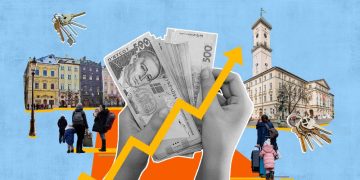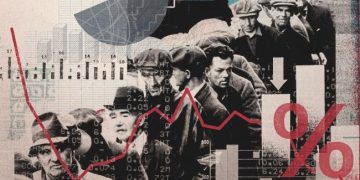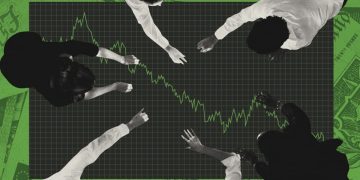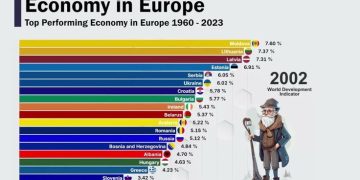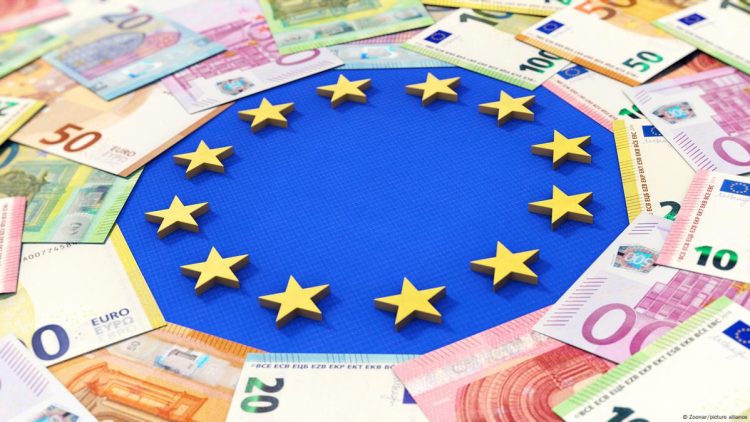In recent years, the European Central Bank (ECB) has faced significant challenges in maintaining economic stability within the Eurozone. One of the tools it uses to influence economic conditions is adjusting interest rates. The ECB’s decisions on interest rates have broad and far-reaching implications for the economy, and the decision to raise rates is no exception.
As inflationary pressures mount and economic conditions evolve, the ECB has been contemplating and implementing interest rate hikes. This shift in monetary policy, while aimed at combating inflation and stabilizing the economy, can have a profound impact on multiple facets of the Eurozone’s economy. In this article, we will explore the potential consequences of interest rate hikes by the ECB, looking at both the short-term and long-term effects on businesses, households, financial markets, and overall economic growth.
1. Why the ECB Raises Interest Rates
Before delving into the impacts of rate hikes, it’s important to understand the reasons behind the ECB’s decision to raise interest rates in the first place. Central banks, including the ECB, generally adjust interest rates to achieve several key objectives:
- Controlling Inflation: When inflation rises above target levels (typically around 2% for the ECB), central banks may raise interest rates to cool down the economy. Higher interest rates make borrowing more expensive, which can reduce consumer spending and business investment, thereby reducing demand and curbing inflation.
- Ensuring Financial Stability: Low interest rates can encourage excessive borrowing and create financial bubbles. By raising interest rates, the ECB aims to prevent the economy from overheating and ensure financial stability.
- Strengthening the Currency: Interest rate hikes can lead to a stronger currency (in this case, the euro), which can help reduce import prices and stabilize inflation, as well as attract foreign investment.
2. Impact on Economic Growth
The immediate and most obvious effect of an interest rate hike is on economic growth. While higher rates can have some positive effects on certain areas of the economy, they can also pose significant challenges. Here are some of the ways in which an increase in rates can influence economic growth in the Eurozone:
2.1. Reduced Consumer Spending
Higher interest rates generally make borrowing more expensive for consumers, particularly when it comes to mortgages, car loans, and credit card debt. As interest rates rise, individuals may find it more difficult to finance large purchases or carry high levels of debt. This reduction in consumer spending can have a dampening effect on overall economic growth.
When households spend less, demand for goods and services tends to decrease, which can slow down economic activity. This is particularly concerning in the Eurozone, where consumer spending plays a crucial role in driving economic growth, especially in countries like Germany, France, and Italy.
2.2. Lower Business Investment
In addition to impacting consumers, higher interest rates also affect businesses. When borrowing costs rise, companies are less likely to take on new debt for expansion projects, investments in research and development, or new infrastructure. Companies may also scale back plans to hire new employees or expand existing operations due to the increased cost of financing.
Reduced business investment can lead to slower economic growth in the long term, as companies may be less willing to innovate or increase their production capacities. In industries that are highly capital-intensive, such as manufacturing or real estate, the impact of higher interest rates can be especially pronounced.
2.3. Slower Economic Recovery
For the Eurozone, which has faced sluggish growth in recent years, higher interest rates could undermine ongoing recovery efforts. Many countries in the Eurozone have been dealing with structural economic challenges, such as high unemployment rates, slow productivity growth, and an aging population. Raising interest rates at a time when economic recovery is fragile could hinder the ability of these countries to regain growth momentum.
Furthermore, countries that are heavily reliant on borrowing for public sector spending, such as Italy and Spain, may face increased fiscal pressures as a result of higher borrowing costs. Governments in these nations may struggle to manage the growing burden of debt, which could further constrain economic recovery.
3. Impact on Inflation
While the primary reason for an interest rate hike is often to combat rising inflation, the effectiveness of this tool can vary. Higher interest rates can help control inflation in several ways:
3.1. Reducing Demand
As interest rates rise, borrowing becomes more expensive for both consumers and businesses. This can reduce the overall demand for goods and services in the economy, which in turn reduces pressure on prices. Lower demand can help ease inflationary pressures, as businesses are less able to pass on higher costs to consumers.
However, the ECB needs to be careful in implementing rate hikes, as excessive tightening could slow down the economy too much, leading to a period of stagnation or even deflation.
3.2. Stronger Euro
Higher interest rates tend to attract foreign investors seeking higher returns on their investments, which can result in a stronger euro. A stronger currency can reduce the cost of imports, thus helping to contain inflation by making goods and services from abroad cheaper. For the Eurozone, which imports significant quantities of energy and raw materials, a stronger euro could alleviate some of the pressures from rising global commodity prices.
However, there are also risks associated with a stronger euro, particularly in terms of the impact on European exports. A stronger currency can make European products more expensive for foreign buyers, potentially reducing demand for European exports and negatively impacting sectors such as manufacturing and agriculture.

4. Impact on Financial Markets
Interest rate hikes by the ECB also have significant effects on financial markets. These effects can vary across asset classes, such as stocks, bonds, and real estate.
4.1. Bond Yields
One of the most direct effects of an interest rate hike is on bond yields. As interest rates rise, the yield on newly issued bonds increases, making existing bonds with lower yields less attractive. This can lead to a drop in bond prices, particularly for long-term bonds, as investors demand higher yields to compensate for the increased interest rate environment.
For investors holding bonds, this could mean a reduction in the value of their portfolios. In particular, sovereign bonds from Eurozone countries with high levels of debt, such as Italy and Greece, may experience increased volatility, as higher borrowing costs could exacerbate concerns about fiscal stability.
4.2. Stock Market Volatility
Higher interest rates can also affect stock prices, as they increase the cost of capital for businesses. When companies face higher borrowing costs, their profitability may decline, leading to lower stock valuations. Additionally, investors may shift their investments from equities to fixed-income assets, such as bonds, which now offer more attractive returns.
In the short term, the stock market may experience increased volatility, particularly in sectors that are sensitive to interest rate changes, such as real estate, utilities, and financial services. Growth stocks, which rely on cheap capital to finance expansion, may also be hit hard by rising rates.
4.3. Real Estate Market Slowdown
Higher interest rates are likely to have a direct impact on the real estate market. Mortgage rates, which are closely tied to ECB interest rates, will increase, making it more expensive for individuals to buy homes. This could lead to a slowdown in housing demand, particularly in already expensive cities like Paris, Berlin, and Madrid.
For investors in real estate, higher rates may reduce the profitability of property investments, as financing costs rise. This could also lead to a cooling of the housing market, which has seen significant price increases in recent years.
5. Impact on Households
The impact of interest rate hikes on households can be significant, particularly for those with existing debt. Here are some of the potential consequences for consumers:
5.1. Higher Loan and Mortgage Payments
For households with variable-rate loans or mortgages, interest rate hikes mean higher monthly payments. This can strain household budgets, particularly for those already dealing with rising living costs. Higher interest payments could reduce disposable income, leading to lower consumer spending on goods and services.
5.2. Increased Savings Incentives
On the flip side, higher interest rates can encourage savings, as consumers can earn more from interest-bearing accounts. While this may benefit savers, the broader impact on consumer spending may be negative, as people may opt to save rather than spend.
5.3. Increased Debt Servicing Costs
Households with significant debt may struggle with higher servicing costs. This could lead to increased defaults or bankruptcies, particularly among those with high levels of credit card debt or personal loans. For some, the higher cost of borrowing could force them to cut back on essential spending, further dampening economic growth.
6. Conclusion: Navigating the Consequences of ECB Rate Hikes
The ECB’s decision to raise interest rates will have wide-reaching implications for the Eurozone economy. While higher rates are designed to combat inflation and stabilize financial markets, they can also lead to reduced consumer spending, slower business investment, and increased financial market volatility. The ECB must carefully manage the pace and scale of interest rate hikes to avoid stifling economic growth while keeping inflation in check.
For the Eurozone, the road ahead will require a delicate balance between monetary policy tightening and ensuring that economic recovery remains on track. The long-term sustainability of the Eurozone economy will depend on how well these challenges are navigated, and whether structural reforms can support growth in the face of a changing economic landscape.







